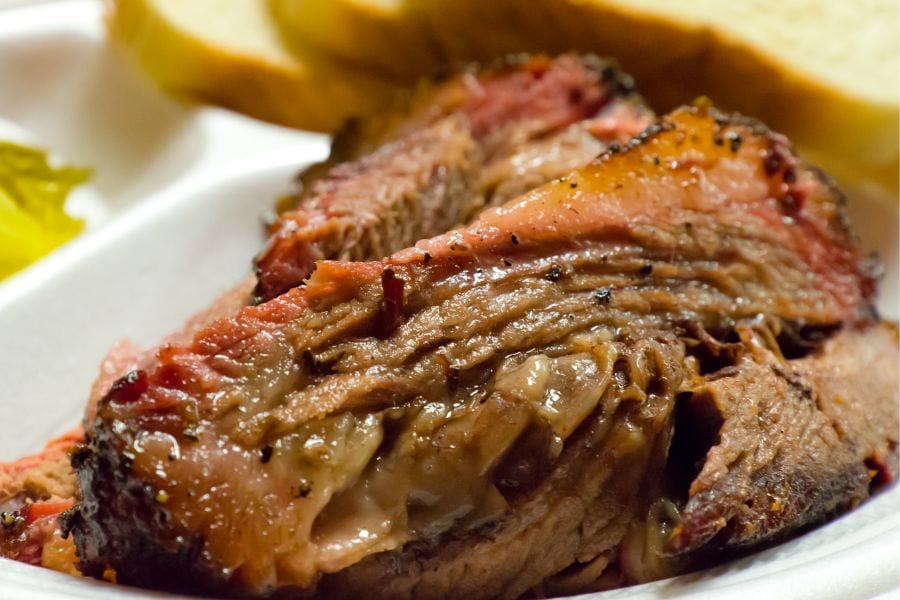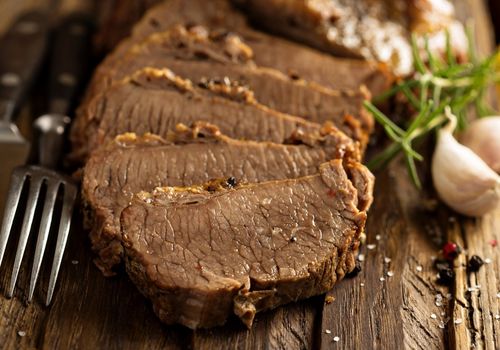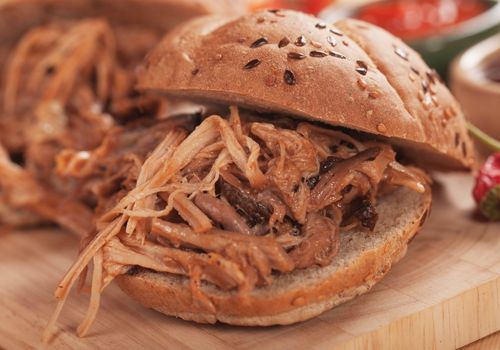Brisket is cut from the breast of the cow and it’s best cooked slowly on low heat. However, pulled pork is essentially any pork cut that has been cooked and shredded into smaller pieces.
Occasionally, I host BBQs in my backyard, and pulled pork and brisket are usually on the menu. I am so fond of cooking them that I’ve created my own recipes. Today, I’ll use all my smoking experience to compare these two cuts and tell you what I’ve learned and which cut I like best. I’ll also show you my special recipe for each cut. So, without further ado, let’s get started.

Differences | Brisket | Pulled Pork |
Type of Meat | Brisket has less fat and is cut from the cow’s breast | Pulled pork has more fat and can be cut from different parts of the pig. However, the most used part is the pork shoulder |
Flavor | Robust meaty flavor | Smoky, slightly sweet flavor |
Cost | Brisket is more expensive | Pulled pork is cheaper |
Cooking Method | Low and slow cooking technique | Low and slow cooking technique |
My Recommended Side Dishes | Rice salad, bread, smoked potatoes, collard greens | Coleslaw, baked beans, Mac 'n' cheese, tacos, succotash, and cucumber salad |
Even the toughest cut of beef may become a mouthwatering barbecue with the proper cooking technique, and the classic example is the brisket.
Brisket is cut from the cow’s breast, directly behind the foreshank and below the first five beef ribs. This piece of meat is also used to make pot roast and corned beef.
The brisket cut can weigh anywhere from 3 to 8 pounds and is split into two distinct slices, and each half has a unique name. The slimmer of the two cuts is the first one, sometimes referred to as the flat or thin cut. The second is delicious because it has more fat and is referred to as the point cut or deckle.
The first cut is the recommended option for corned beef since it’s lean meat. However, for barbecue, the second cut is preferred since it has more fat, making it moist and tender after hours of grilling.
You can tell there is a lot of connective tissue in the meat just by looking at it. This is what gives brisket its tough texture.
Brisket typically has a robust, meaty flavor, but the cooking procedure has a significant impact on the taste.
While braising adds the flavor of the liquid to the meat, smoking and brining add a unique mouthfeel to the uncooked meat. Of course, a good barbecue sauce can also greatly elevate the taste.
The brisket is a tough cut, so the best way to prepare it is to gently simmer it for several hours at low temperatures.
You can end up smoking this meat for up to 8 hours or more. This meat can also be turned into a succulent piece of meat by brining or braising.
When smoked, brisket is less forgiving than pulled pork. Briskets tend to be chewy and inedible if they are undercooked and dry if you overcook them. Pork cooks more quickly. Pork butt also requires less cooking time than beef brisket.
Cooking brisket can be a time-intensive process. Here’s how I smoke brisket:

Pulled pork is meat that’s cooked until tender and then shredded. Usually, the meat is cooked by slow-cooking it over wood. After being cooked, the meat is shredded and served with various sauces, such as barbecue sauce.
The pork shoulder is the part used to make pulled pork. Pork shoulder is a large cut that consists of the front leg and shoulder of the boar.
In most stores, pulled pork is sold in two parts: Boston butt and picnic roast. While the picnic roast is normally a bone-in roast, the Boston butt is typically sold either bone-in or boneless.
Whether you intend to barbecue the entire pork shoulder or just a portion of it, it’s crucial to choose the portion with a lot of fat. This makes the process of cooking pulled pork simpler.
After picking a portion of pulled pork with plenty of fat, take a knife and cut off about half an inch of fat.
Cutting off some of the plentiful fat will allow the smoke to permeate through the meat more easily.
Pulled pork has a flavor that’s smoky, slightly sweet, and fatty when cooked properly on the barbecue.
The flavor of pulled pork can be enhanced by applying a BBQ rub to the cut before cooking. This infuses the piece of meat with the flavor of the rub. Remember to ensure that the meat is completely covered when cooking it.
Generally, people prefer pulled pork over brisket because of its tenderness that melts in the mouth.
You can serve it as is, right out of the smoker, and after pulling it, top it with your preferred barbecue sauce. Pulled pork can be used to make pulled pork sandwiches, or eaten as a side with baked beans, potato salad, and burgers.
Pulled pork is a great cut of meat to start learning about barbecue and smoking because it is cheap and relatively easy to cook. This meat can be tough if undercooked, but it has a fantastic flavor.
Moreover, due to the fat content, it has a less dry mouthfeel when overcooked. Just remember to have your BBQ sauce within reach.
In addition, pulled pork should be seasoned, wrapped in plastic wrap, and refrigerated overnight to produce better tasting beef. Remember to remove the pork shoulder from the fridge a few hours before cooking so it can come to room temperature before smoking.
Cooking pulled pork is not a complicated process. There are a few factors to keep in mind when smoking pulled pork.
Related Reading

So, which meat comes out on top in the battle between brisket vs pulled pork? Brisket and pulled pork are delicious proteins loved by many, including myself! Compared to the culinary challenge of precisely smoking beef brisket, pulled pork is simpler to cook. Some people favor pulled pork because of how quick, simple, and inexpensive it is.
Others find the extra effort and expense required to successfully prepare a tasty brisket to be worth it. Personally, I prefer a deliciously smoked brisket. This large cut can also feed many guests, so that’s a plus whenever I host large gatherings in my backyard. To each their own. You may prefer the simplicity and flavor of pulled pork. The best meat cut entirely depends on you.